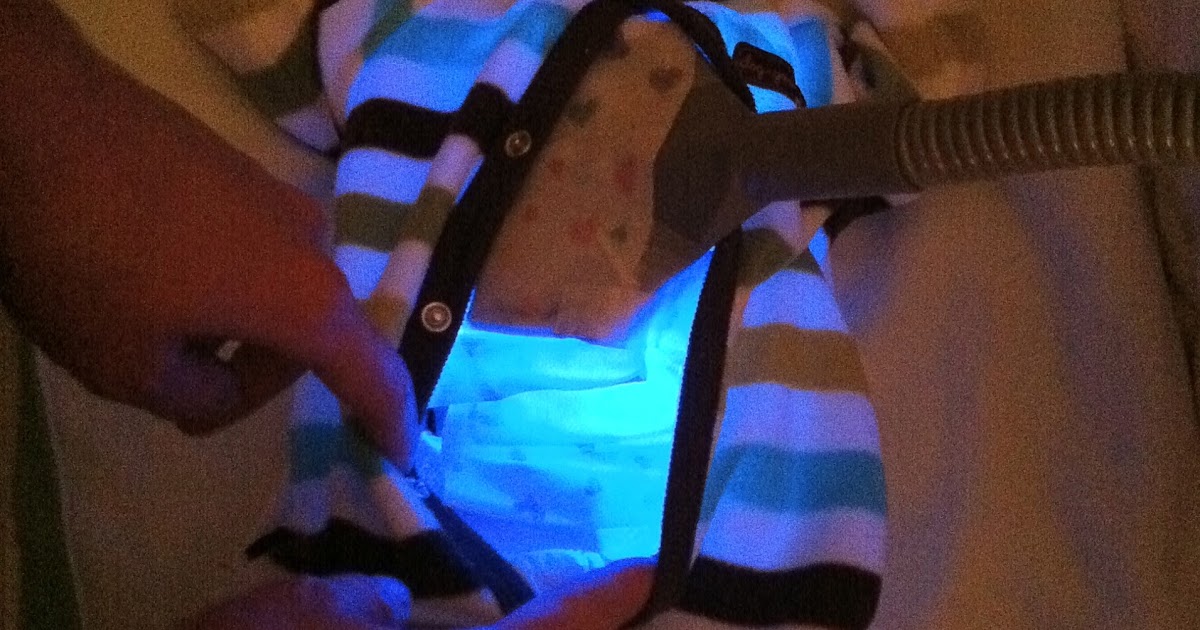
The BiliBee LED Phototherapy System is a portable, battery operated or AC powered device that utilizes an LED illuminator pad for the treatment of neonatal jaundice. Illumination Technologies develops consumer products that utilize our expertise in photonics and light manipulation to offer consumers high value products in a currently unmet market need. Email us today at info@illuminationtech.com for more information on our current products or partner opportunities.
Bili lights are a type of light therapy (phototherapy) that is used to treat newborn jaundice. Jaundice is a yellow coloring of the skin and eyes. It is caused by too much of a yellow substance called bilirubin. Bilirubin is created when the body replaces old red blood cells with new ones.

Phototherapy involves shining fluorescent light from the bili lights on bare skin. A specific wavelength of light can break down bilirubin into a form that the body can get rid of through the urine and stools. The light looks blue.
- The newborn is placed under the lights without clothes or just wearing a diaper.
- The eyes are covered to protect them from the bright light.
- The baby is turned frequently.
The health care team carefully notes the infant's temperature, vital signs, and responses to the light. They also note how long the treatment lasted and the position of the light bulbs.
The baby may become dehydrated from the lights. Fluids may be given through a vein during treatment.
Blood tests are done to check the bilirubin level. When the levels have dropped enough, phototherapy is complete.
Some infants receive phototherapy at home. In this case, a nurse visits daily and draws a sample of blood for testing.
Treatment depends on 3 things:
- Bilirubin level in the blood
- Newborn's age (in hours)
In severe cases of increased bilirubin, an exchange transfusion may be done instead.
Phototherapy for jaundice; Bilirubin - bili lights; Neonatal care - bili lights; Newborn care - bili lights
Kaplan M, Wong RJ, Burgis JC, Sibley E, Stevenson DK. Neonatal jaundice and liver diseases. In: Martin RJ, Fanaroff AA, Walsh MC, eds. Fanaroff and Martin's Neonatal-Perinatal Medicine. 11th ed. Philadelphia, PA: Elsevier; 2020:chap 91.
Marcdante KJ, Kliegman RM. Anemia and hyperbilirubinemia. In: Marcdante KJ, Kliegman RM, eds. Nelson Essentials of Pediatrics. 8th ed. Elsevier; 2019:chap 62.
Watchko JF. Neonatal indirect hyperbilirubinemia and kernicterus. In: Gleason CA, Juul SE, eds. Avery's Diseases of the Newborn. 10th ed. Philadelphia, PA: Elsevier; 2018:chap 84.
Updated by: Neil K. Kaneshiro, MD, MHA, Clinical Professor of Pediatrics, University of Washington School of Medicine, Seattle, WA. Also reviewed by David Zieve, MD, MHA, Medical Director, Brenda Conaway, Editorial Director, and the A.D.A.M. Editorial team.
Which biliblanket do I have and how do I set it up?
Bilibee Led
Please click “CC” when video begins for captions in Spanish.

The information on this site is not intended or implied to be a substitute for professional medical advice, diagnosis or treatment. All content, including text, graphics, images and information, contained on or available through this web site is for general information purposes only.
Bilibee Instructions
BiliTx Professional Manual

Bilibee Led Phototherapy System
Medical Disclaimer. The information on this site is not intended or implied to be a substitute for professional medical advice, diagnosis or treatment. All content, including text, graphics, images and information, contained on or available through this web site is for general information purposes only.
